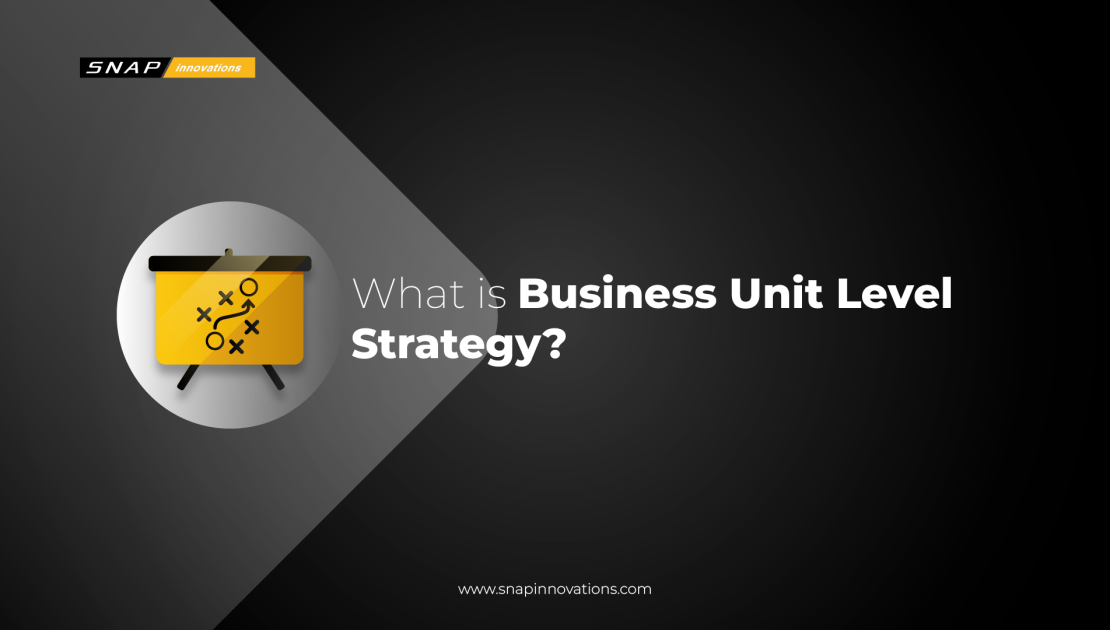In the dynamic world of business where complexities intertwine with opportunities, executing a robust ‘business unit level strategy’ becomes an indispensable part of organizational success. Companies that navigate the business landscape with a meticulous strategy are more adept at capitalizing on opportunities while mitigating risks. At the core of this proficiency lies the business unit level strategy—a potent tool that enhances competitive positioning and drives sustainable growth.
In the realm of organizational structure, where corporations often diversify into various segments, each segment or business unit requires a tailored strategic approach. The essence of business unit level strategy lies in this customization, allowing each segment to flourish, navigate its unique challenges, and contribute meaningfully to the overall organizational objectives. Throughout this article, we will explore the intricate facets of business unit level strategy, unraveling its significance, execution, and impact on broader business goals.
Adapting a keen focus on the business unit level strategy, we embark on a comprehensive journey. This voyage will unveil how this strategy operates as a cornerstone in building a resilient and prosperous organizational framework. Armed with insights and practical perspectives, this exploration aims to empower business enthusiasts and professionals with the knowledge to harness the full potential of business unit level strategies in their respective domains.
What is Business Unit Level Strategy?
Diving into the realm of strategic management, the business unit level strategy emerges as a focal point in steering business units or divisions towards success. It is a specialized approach, curated to align the operations and objectives of a specific business unit with the overall organizational goals. By doing so, it ensures that each business unit is optimally positioned, leveraging its unique strengths and competencies in the competitive marketplace.
The core essence of the business unit level strategy lies in its ability to foster a competitive advantage. It refines the business unit’s value proposition, guiding it to deliver products or services that resonate with customer needs while outshining competitors. This strategic posture enhances the business unit’s adaptability, resilience, and prowess in navigating the complexities and volatile elements of the business environment.
Elaborating further, the business unit level strategy involves meticulous planning and execution. It encompasses defining clear objectives, identifying growth avenues, optimizing resources, and fostering innovation. It acts as a compass, directing the business unit towards achieving predefined objectives while ensuring alignment with broader organizational visions and goals.
Also Read: Innovation and Invention: Understanding Their Meanings, Differences, and Why They Matter
The Significance of Business Unit Level Strategy
Business unit level strategy carries profound significance in sculpting the trajectory of business units towards growth and success. It orchestrates a harmonized approach where business units are fine-tuned to resonate with market demands and competitive pressures. Through a well-articulated strategy, business units are empowered to foster distinctive competencies and value propositions, enhancing their market positioning and customer appeal.
One of the vital aspects of business unit level strategy is its role in fostering innovation. It acts as a catalyst, stimulating creative pursuits and innovative solutions within the business unit. By doing so, it ensures that the business unit remains aligned with evolving market trends, technological advancements, and changing consumer preferences, thereby ensuring relevance and competitiveness.
The strategy also plays a pivotal role in optimizing operational efficiencies. It guides the business unit in resource allocation, process refinement, and performance management, ensuring that operations are streamlined and productive. This not only boosts the business unit’s performance but also contributes to achieving organizational excellence and sustainable growth.
Influencing decision-making processes is another noteworthy contribution of business unit level strategy. It provides a structured framework that facilitates informed and strategic decisions, enhancing the business unit’s ability to navigate uncertainties, seize opportunities, and mitigate risks. This strategic clarity and direction empower the business unit to maneuver through business challenges with agility and confidence.
Crafting a Robust Business Unit Level Strategy
 Crafting a robust business unit level strategy necessitates a thoughtful and strategic approach. It involves understanding the business unit’s core competencies, market positioning, and growth potentials. Based on these insights, the strategy is formulated to align with both internal capabilities and external market dynamics.
Crafting a robust business unit level strategy necessitates a thoughtful and strategic approach. It involves understanding the business unit’s core competencies, market positioning, and growth potentials. Based on these insights, the strategy is formulated to align with both internal capabilities and external market dynamics.
A crucial aspect of crafting the strategy involves conducting comprehensive market research. This enables the business unit to garner valuable insights into market trends, competitive landscapes, and customer preferences. Armed with these insights, the strategy can be tailored to resonate with market opportunities and competitive strengths.
The formulation of the strategy also involves setting clear and achievable objectives. These objectives serve as a roadmap, guiding the business unit in its strategic pursuits and performance metrics. They foster a sense of direction and purpose, ensuring that the business unit’s actions and initiatives are aligned with predefined goals and expectations.
Implementing the Business Unit Level Strategy
 Implementation is a critical phase in the business unit level strategy process. It involves translating the strategic plans into actionable initiatives and operations. A well-executed implementation ensures that the strategy materializes its intended benefits and objectives.
Implementation is a critical phase in the business unit level strategy process. It involves translating the strategic plans into actionable initiatives and operations. A well-executed implementation ensures that the strategy materializes its intended benefits and objectives.
Effective implementation necessitates a cohesive and collaborative approach. It requires the alignment and commitment of the business unit’s team, ensuring that everyone is onboard and aligned with the strategy’s vision and objectives. This fosters a conducive environment where the strategy is embraced and executed with diligence and proficiency.
Moreover, implementation also involves continuous monitoring and evaluation. It is essential to assess the strategy’s progress and impact regularly, ensuring that it is on track towards achieving its objectives. This allows for timely adjustments and refinements, ensuring that the strategy remains relevant and effective amidst changing business dynamics.
In the course of implementation, it is also vital to foster flexibility and adaptability. Given the volatile nature of the business environment, the strategy must be equipped to navigate uncertainties and changes effectively. This ensures that the business unit can maneuver through challenges and capitalize on emerging opportunities with agility and resilience.
Challenges in Business Unit Level Strategy
 In the realm of business unit level strategy, various challenges may surface, posing hurdles in its formulation and execution.
In the realm of business unit level strategy, various challenges may surface, posing hurdles in its formulation and execution.
1. Alignment with Organizational Goals and Strategies
One of the foremost challenges in business unit level strategy is ensuring that the business unit’s strategy is in alignment with the overall organizational goals and strategies. It’s essential to ensure that the strategies developed at the business unit level do not deviate from or conflict with the broader organizational objectives. This alignment is pivotal as it drives coherence and unified direction across different levels of the organization, ensuring collective success and organizational effectiveness.
Inconsistencies between business unit strategies and organizational goals can lead to confusion, misalignment of resources, and inefficiencies. Thus, a concerted effort must be made to facilitate communication and collaboration between different business units and the larger organization. This includes establishing clear guidelines, ensuring that there’s a shared understanding of the organizational vision, and implementing mechanisms for continuous strategy evaluation and alignment.
2. Navigating Competitive Landscape Complexities
A significant challenge involves understanding and navigating the complexities of the competitive landscape. The strategy must be robust and adept at positioning the business unit to withstand competitive pressures and establish a distinctive presence in the market. This involves a continuous process of innovation, adapting to changing competitive dynamics, and foreseeing strategic opportunities and threats in the marketplace.
The business unit needs to be proactive in identifying shifts in competitor strategies, market trends, and technological advancements. A sound business unit strategy must be based on a comprehensive understanding of the competitive forces and must be equipped with tactical flexibility to respond to emerging competitive challenges. This requires a commitment to continuous learning, improvement, and strategic agility.
3. Adapting to Market Trends and Consumer Preferences
Adapting to the dynamic nature of market trends and consumer preferences is another crucial challenge in the business unit level strategy. Strategies must be continuously revised and fine-tuned to resonate with the evolving market dynamics, ensuring that products or services remain relevant and attractive to the target audience. This involves cultivating a deep understanding of customer needs, preferences, and behaviors and leveraging this insight to inform strategic decision-making.
The strategy must embody a proactive and responsive approach, capable of adapting to changing market needs and seizing emerging opportunities. This necessitates the creation of flexible business models and operational processes that can be adjusted in response to shifting market trends. In addition, continuous engagement with customers through various channels is essential to garner real-time insights and feedback, facilitating the refinement of strategies to meet customer expectations better.
Evaluating the Effectiveness of Business Unit Level Strategy
Evaluation is a crucial aspect of the business unit level strategy. It involves assessing the strategy’s performance and impact, ensuring that it is yielding the desired outcomes and benefits.
1. Performance Measurement against Objectives and KPIs
An integral part of evaluating business unit level strategy effectiveness lies in the measurement of the strategy’s performance against predefined objectives and Key Performance Indicators (KPIs). Having a set of clear, measurable objectives allows for a precise assessment of whether the strategy is on course to achieving its intended goals. This creates a quantifiable dimension of strategy assessment that can guide further decision-making and strategy adjustment.
Such a performance-based evaluation approach promotes accountability within the business unit, encouraging a culture oriented towards results and continuous improvement. This facet of evaluation is crucial because it allows for objective assessments of the strategy’s successes and areas where improvement or adjustment is needed, ensuring that the strategy remains dynamic and responsive to actual performance outcomes.
2. Stakeholder Feedback and Perspectives
Evaluation should also encompass the collection and analysis of feedback and perspectives from a diverse array of stakeholders, including team members, customers, and business partners. Engaging with stakeholders offers a multifaceted view of the strategy’s impact and effectiveness, providing insights that extend beyond numerical performance metrics. It helps in understanding how the strategy is perceived, its practical implications, and its alignment with stakeholder needs and expectations.
Gathering stakeholder feedback fosters a culture of continuous improvement and adaptability. It ensures that the business unit’s strategy remains aligned with evolving stakeholder needs, market demands, and operational realities. Such an approach ensures that the strategy is not only theoretically sound but also practically effective and resilient, bolstering its capacity to drive sustained success and value creation.
3. Holistic Impact Assessment
A comprehensive evaluation involves assessing the holistic impact of the business unit strategy, including its influence on various organizational facets such as operations, customer satisfaction, and employee engagement. This wider perspective enables a more nuanced understanding of the strategy’s effectiveness and areas where enhancements may be necessary.
Conducting a holistic impact assessment ensures that the strategy’s effectiveness is viewed from multiple angles, promoting a well-rounded view of its contributions and deficiencies. It enables the identification of unanticipated consequences, potential areas of improvement, and the broader implications of the strategy on the organizational ecosystem. This nuanced evaluation is essential for refining the strategy to ensure that it delivers comprehensive benefits and aligns seamlessly with broader organizational objectives and capabilities.
The Future of Business Unit Level Strategy
Looking towards the future, business unit level strategy holds immense potential in steering business units towards unprecedented heights of success and innovation. With evolving business landscapes, the strategy’s role becomes increasingly pivotal in navigating the realms of competition, innovation, and market relevance.
In the future, we foresee a more agile and adaptable business unit level strategy, finely tuned to navigate the volatilities and uncertainties of the business environment. This adaptability will empower business units to maneuver through challenges, seize emerging opportunities, and foster sustainable growth paths.
Read More: Serverside Rendering: Unveiling its Power and Potential in Web Development
Conclusion
Business unit level strategy is quintessential in sculpting the trajectory of organizational success and competitive distinction. It emerges as a catalyst, instigating innovation, guiding operational refinement, and navigating the complexities of market evolution and competitive rivalry. The strategy encompasses a spectrum of considerations, aiming to synchronize with overarching organizational objectives, adapt to the fluidity of market trends, and orchestrate a symphony of operational efficacy and customer value.
In a future embellished with unprecedented challenges and opportunities, the vibrancy of business unit level strategy will be a pivotal luminary, guiding business units through uncertainties, fostering resilience, and illuminating avenues of sustainable success and innovation. The essence of such a strategy will be enriched by continuous evaluation, adaptability, and a potent alignment with evolving market demands and competitive landscapes. Harnessing the power of strategic acumen, business units are empowered to ascend new pinnacles of excellence, crafting a legacy of innovation, value creation, and formidable market presence. Thus, in the confluence of vision, strategic agility, and relentless pursuit of excellence, business units burgeon, flourishing in the garden of business vitality and innovation.

